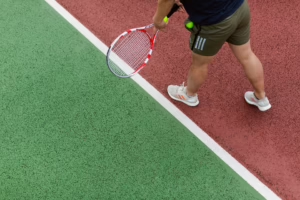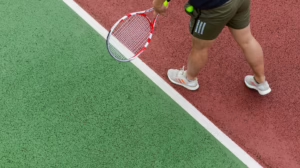Beyond Massage: Exploring Advanced Trigger Point Techniques
Introduction
Massage therapy has long been celebrated for its ability to relieve tension, reduce pain, and enhance overall well-being. Among the various modalities within massage, advanced trigger point techniques stand out for their targeted approach to relieving muscle knots and chronic pain. This article delves into the intricacies of trigger points, the advanced techniques used to address them, and the benefits they offer beyond traditional massage therapy.
Understanding Trigger Points
What are Trigger Points?
Trigger points are hyperirritable spots found in a taut band of skeletal muscle. They can cause localized pain and refer discomfort to different areas of the body. For instance, a trigger point in the trapezius muscle might cause pain in the neck or head, commonly referred to as tension headaches. Understanding the nature of these points is crucial for developing effective treatment strategies.
Types of Trigger Points
-
Active Trigger Points: These are painful upon palpation and can lead to referred pain. Active trigger points cause symptoms that are noticeable in the range of motion.
-
Latent Trigger Points: While these do not cause pain unless pressed, they can restrict movement and contribute to a sensation of stiffness.
Causes of Trigger Points
The formation of trigger points can be attributed to various factors, including:
- Muscle Overuse: Repetitive motions or prolonged postures can strain muscles, leading to the development of trigger points.
- Injury: Acute trauma to a muscle can also initiate the formation of trigger points.
- Stress: Psychological stress can lead to muscle tension, increasing the likelihood of trigger point development.
Symptoms Associated with Trigger Points
The manifestations of trigger points can vary widely but often include:
- Localized pain that radiates to other areas
- Muscle stiffness and limitation in range of motion
- Tension headaches
- Sleep disturbances and fatigue
Advanced Trigger Point Techniques
Myofascial Release
Myofascial release is a gentle, hands-on technique that targets the fascia, the connective tissue surrounding muscles and organs. By applying sustained pressure to areas of restriction, practitioners can encourage change and relieve pain linked to trigger points.
How It Works
- Assessment: The therapist evaluates the fascia and identifies areas of tightness.
- Sustained Pressure: They apply gradual pressure to the tight areas, allowing the fascia to stretch and release.
- Techniques: Various techniques are used, including gentle stretching and oscillation.
Dry Needling
Dry needling involves inserting fine needles into trigger points to stimulate muscle relaxation and healing. While similar to acupuncture, it specifically targets muscular trigger points, rather than, traditional meridian points.
The Process
- Assessment: The therapist evaluates the muscle for trigger points.
- Needling: A sterile needle is inserted into the trigger point.
- Response: The insertion may elicit a twitch response, which is often a sign that the muscle is releasing tension.
Cupping Therapy
Cupping therapy employs suction cups to create a negative pressure on the skin, promoting blood flow and reducing tightness in the surrounding muscle tissue. It’s especially effective for trigger points as it can draw blood flow to the area, facilitating healing.
Technique Overview
- Preparation: Oil is applied to the skin to allow for smooth movement of the cups.
- Application: The cups are placed on the skin, and suction is created either through heat or mechanical pumps.
- Movement: The cups may be moved along the skin to maximize the release of tension in multiple areas.
Instrument-Assisted Soft Tissue Mobilization (IASTM)
IASTM involves using specialized tools to break down scar tissue and fascial restrictions, promoting healing and relieving pain in muscles with trigger points.
Application Steps
- Selection of Tools: Various instruments are chosen based on the area being treated.
- Technique: The practitioner glides the tool over the skin, applying appropriate pressure to stimulate the underlying tissue.
- Assessment: Regular assessments help determine the effectiveness of the treatment and necessary adjustments.
Active Release Techniques (ART)
This is a hands-on dynamic movement-based technique that provides both diagnosis and treatment for muscles, nerves, and fascia.
How ART Works
- Identifying: The therapist identifies the affected muscle and performs an assessment.
- Movement: The client actively moves the affected area while the therapist applies targeted pressure to the trigger point.
- Result: This method encourages natural movement patterns and alleviates pain associated with trigger points.
Neuromuscular Therapy (NMT)
NMT targets the autonomic nervous system’s influence on muscular dysfunction. This technique focuses on the relationship between the nervous system and musculoskeletal pain.
Key Steps
- Diagnosis: An assessment is carried out to identify painful areas linked to the nervous system’s reaction.
- Pressure Application: Specific pressure is applied to trigger points, facilitating the release of muscle tension.
- Client Feedback: Ongoing feedback from the client helps guide the session effectively.
The Benefits of Advanced Trigger Point Techniques
Pain Relief
One of the most immediate benefits of advanced trigger point techniques is the relief from chronic pain. By targeting specific areas of tension, therapists can effectively alleviate muscle-related pain, enhancing overall comfort.
Improved Mobility
Advanced techniques often lead to greater flexibility and range of motion. By releasing tight muscles, clients may experience an increase in their overall functional mobility.
Enhanced Recovery from Injury
Sports injuries, repetitive strain injuries, and posture-related discomfort can be effectively managed using advanced trigger point techniques. They facilitate a quicker recovery by addressing underlying muscular tension.
Stress Reduction
Muscle tension is commonly linked to heightened stress levels. By targeting trigger points through advanced techniques, clients often report reduced anxiety levels and improved mental clarity.
Improved Circulation
Many of these techniques, particularly cupping therapy and myofascial release, can enhance blood circulation. Improved blood flow facilitates nutrient delivery and waste removal, promoting overall muscle health.
Conclusion
As we continue to explore more advanced approaches to musculoskeletal health, it becomes clear that advanced trigger point techniques offer numerous benefits beyond those provided by traditional massage. From pain relief and improved mobility to stress reduction, these methods present a comprehensive approach to managing the complexities of muscular tension.
Investing in education and training around these techniques will enable massage therapists and practitioners to offer clients more holistic and effective care, paving the way for a future where pain management is both targeted and innovative. Whether you’re a therapist looking to expand your skill set or a client seeking relief, the world of advanced trigger point techniques offers powerful tools for enhancing physical well-being.
References
- Travell, J.G., & Simons, D.G. (1999). Myofascial Pain and Dysfunction: The Trigger Point Manual. Lippincott Williams & Wilkins.
- Dommerholt, J., & Huijbregts, P. (2015). Dry Needling: A Novel Approach to Myofascial Trigger Points. Journal of Musculoskeletal Pain, 23(2), 1-6.
- Choi, T.Y., Lee, M.S., Lee, H., Shin, B.C., & Ernst, E. (2013). Cupping for Pain Management: A Systematic Review. Evidence-Based Complementary and Alternative Medicine, 2013.
- M. M. (2006). Instrument-Assisted Soft-Tissue Mobilization: A New Approach to Soft-Tissue Treatment. Today’s Therapy, 8(1), 35-40.
- Kendall, F.P., McCreary, E.K., & Provance, P.G. (1993). Muscle Testing and Function. Lippincott Williams & Wilkins.
Feel free to reach out for modifications or specific sections to expand upon if needed!


























Add Comment